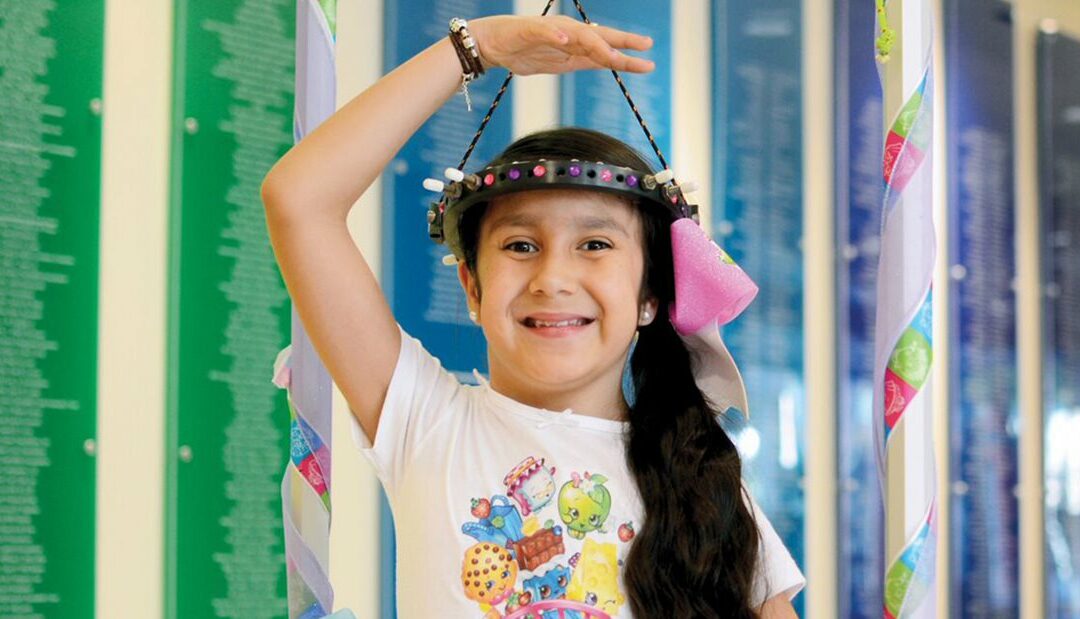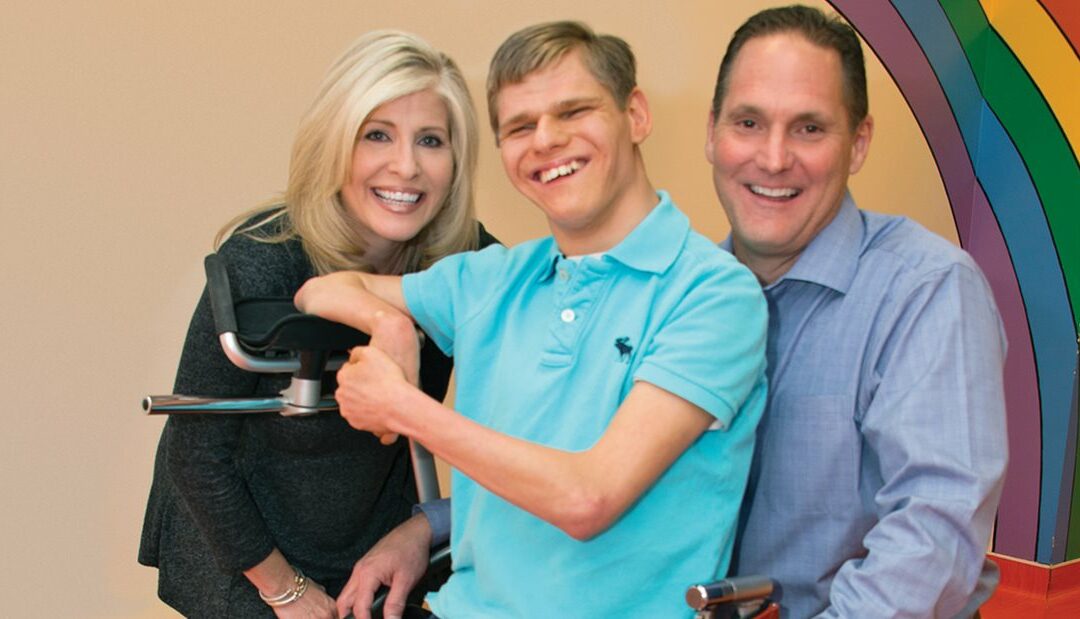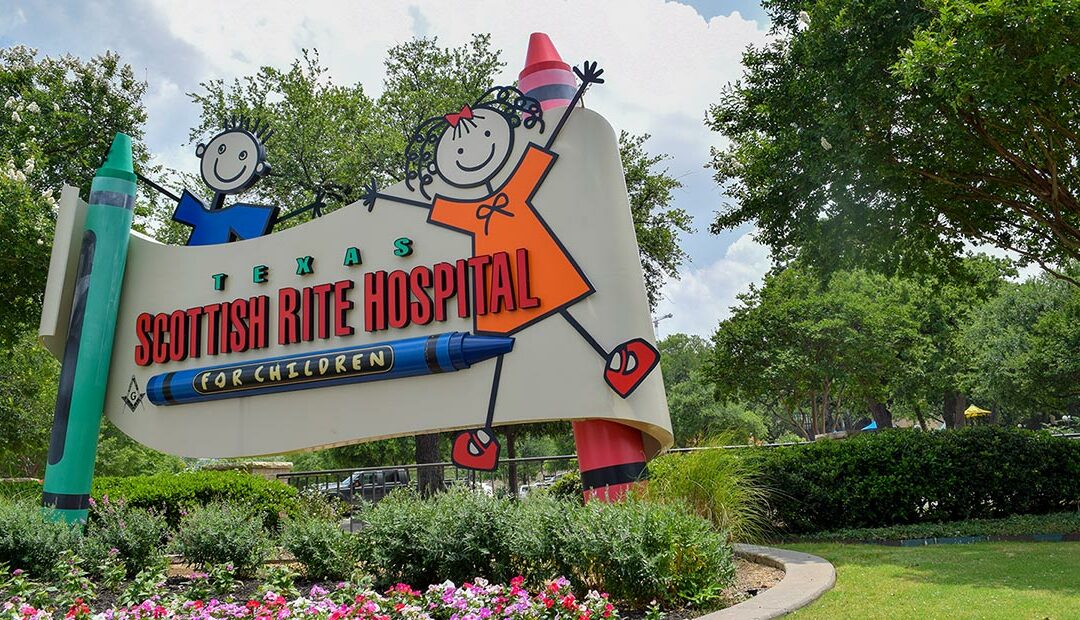


JohnMichael’s Story: A Sign of Hope
He has been described as light, love and joy.
His zest for life is magnetic. People call him a miracle. Meet JohnMichael. And when you do, don’t underestimate him. He has endured more trials and storms in his 17 years than most people do in a lifetime. Fortunately, after a storm in 2015 the first of many rainbows appeared, divinely timed and affirming that JohnMichael and his family would soon be on the right road to a place of hope. The journey for Houston-area couple Johnnie and Mike Morman began abruptly on August 23, 1999, when Johnnie was 26 weeks pregnant.
“We knew it was a complicated pregnancy,” Mike explains. “Our doctor told us, ‘We need to deliver the baby,’ and we were thinking in a couple of weeks, and she said, ‘No, today.’ ”
JohnMichael would not survive if he was not delivered but would only have a 10 percent chance of surviving if he was.
“JohnMichael is the embodiment of miracles,” says Shawna, Mike’s sister. She and her husband, Tim, and their children, Jason and Melissa, have been by JohnMichael’s side since he came into the world that day kicking and screaming at an astonishing 11 ounces.
JohnMichael has endured numerous physical challenges in his young life but it was the severe and rapid onset of scoliosis at age 15 that led his family to Scottish Rite Hospital.
In 2014, his parents began to notice a subtle change in JohnMichael’s normally sunny disposition and a physical change in his back. Fueled by an adolescent growth spurt and a neuromuscular imbalance, related to his preexisting cerebral palsy, he had a curvature in his spine that was progressing at an alarming rate.
The couple immediately sought medical opinions in Houston and had not yet learned about Scottish Rite Hospital.
“They were told they should go home and enjoy the time they had left with him,” his aunt, Shawna, recalls. “They gave them no hope.”
That’s when the rainbows began to appear.
“We were experiencing some difficult times,” Johnnie says. A family friend encouraged them to seek another opinion from a local orthopedist who was a longtime friend and advocate for Scottish Rite Hospital. From that meeting, the family learned more about the hospital and its expertise in treating scoliosis. “After that visit, we were sitting outside praying for guidance when we saw a double rainbow. We both felt it was an affirmation.”
Upon entering Scottish Rite Hospital on November 20, 2015, for their first visit, the family was immediately put at ease. Volunteers extended a warm greeting and guided them to their appointment with staff orthopedist Amy L. McIntosh, M.D., who evaluated JohnMichael’s curvature.
“I told them I could fix it but it would be a long journey, and they said, ‘That’s hope,’ ” McIntosh recalls.
“When she told us that she could help our son, it was like a weight had been lifted off of us,” Mike says. “We were looking for hope and we found it at Scottish Rite Hospital.”
The next step was for JohnMichael to be evaluated by a multidisciplinary group of medical specialists, which just happened to be called the Rainbow Team. The group represents Scottish Rite Hospital’s collaborative approach to patient care. Experts from departments throughout the hospital combine forces to develop an individualized treatment plan for the unique needs of each child.
“Scottish Rite Hospital takes an approach that is so patient-centered,” Mike says, “from nutrition, to surgical, to emotional and physical.”
Later, when the family was escorted to see the surgery unit, elevator doors opened to reveal a rainbow painted on the wall. “OK, this is where we are supposed to be,” Johnnie recalls saying.
Two months later, JohnMichael underwent halo gravity traction, in which a metal ring is surgically affixed to the skull and attached to a cable that suspends the body vertically from a metal frame. While it may look painful, this procedure actually provides the patient comfort and relief almost immediately, by removing pressure on the spine and gently stretching it.
“He could breathe better,” recalls his cousin, Melissa. “Physically, mentally, he literally opened up.”
After five months of traction, JohnMichael underwent a second surgery to remove the halo and address surgical adjustments to his spine. As a result of his successful scoliosis treatment, he gained 17 pounds, five inches in height and so much more.
“Scottish Rite Hospital gave JohnMichael his life back,” Shawna says, “and gave Mike and Johnnie their life back, too.”
When asked what they tell others about the hospital, the couple bursts into joyous laughter. “We tell everyone about Scottish Rite Hospital!” Johnnie exclaims.
“This hospital is phenomenal and the staff is incredible, in every area,” Mike adds. “They become your family.”
From Security to Dietary and everywhere in between, JohnMichael makes the rounds to visit members of his extended hospital family during each visit. Shouts for his pal “Super Dave!,” patient care tech David Calles, echo in the halls.
“The care is so genuine. His experience at the hospital has changed him,” Mike says. “We’ve been through our share of medical facilities and there’s nowhere like this.”
Family, friends, church and their faith have been tremendous sources of support for JohnMichael and his parents throughout their journey.
“In the storms of life, God gives us a rainbow of hope,” Johnnie says, “and for us, that was Scottish Rite Hospital.”

Things to Know About Scoliosis Screening
- What is scoliosis? Scoliosis is a progressive condition causing the spine to curve or twist into a “C” or “S” shape.
- What causes scoliosis? The most common form of scoliosis is idiopathic, meaning there is no known cause. Despite some popular beliefs, scoliosis does not result from carrying heavy items, athletic activity, sleeping/standing postures, or minor lower limb length discrepancies. Researchers at Texas Scottish Rite Hospital for Children identified the first genes associated with idiopathic scoliosis and hope the discovery will one day lead to identifying the cause of the spinal curvature.
- How is it diagnosed? Scoliosis usually occurs in early adolescence (5th – 9th grade), becoming more noticeable during a growth spurt. The child’s physician or school nurse will screen for scoliosis by having the child perform the Adam’s Forward Bend Test to look for any unevenness or abnormalities in the shoulders, ribcage or back. They can also screen using a device called the scoliometer or by taking an X-ray.
- Treatment: If your child has been told they have a curvature in the spine, their physician or school nurse can refer them to a health care provider such as Texas Scottish Rite Hospital for Children. From there, the physician will find the proper treatment method for your child.
- Note: Approximately 5 percent of the patients referred to Scottish Rite Hospital will need treatment:
- 50 percent – are determined not to have scoliosis and are released from care
- 45 percent – need observation
- 2 percent – need a brace
- 3 percent – need surgery
Watch this video from our Assistant Chief of Staff Dr. Karl Rathjen.
